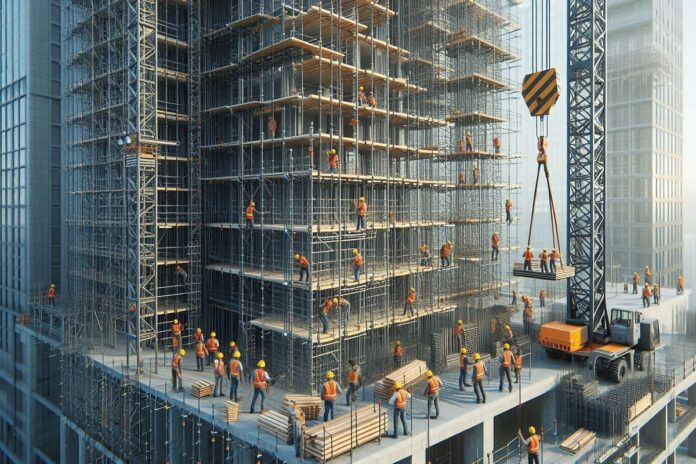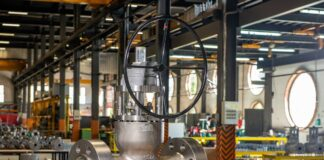The basic guidelines that need to be followed before erecting the scaffolding systems are to achieve steadiness of the structure, safety of workers, and concerning the legal requirements.
In construction work, scaffolding systems are extremely important. They offer workers a safe platform for the performance of different tasks at various heights. Thus, they prevent falls between the ground level and platforms.
Still, safety incidents have been experienced due to inappropriate scaffolding practice. Scaffolding system manufacturers have to ensure quality control measures to manufacture high-quality scaffolding systems that can be installed at the construction site efficiently.
10 Best Precautions to consider before installing Scaffolding Systems
Find out what you want more to do as a contractor when it comes to risk evaluation for scaffolding erection and installation and what should be done with regard to protection measures such as anchorage, amongst other things, as well as the required safety requirements that should be met.

Also Read: Why investment in Cuplock Scaffolding would benefit construction companies
#1. Conduct a Thorough Site Inspection
Make sure to inspect the site before setting up the scaffolding. You have to check on the ground conditions because stability is very important in this regards. If the ground is unsound or haphazard, it may cause your scaffolding to collapse. Clear the area of any debris, holes, and obstructions before setting up.
Another thing to check the weather. It might be rainy or windy, all of which can be unfavourable for the scaffolding stability. Avoid the assembly and usage of any kind of scaffolding in bad winds or storms. Make sure there’s routine checking on the site for the whole project concerning safety.
#2. Choose the Right Scaffolding System
The right scaffolding system to select is required in a project. There are varied scaffolding types used for different projects. For instance, suspended scaffolding would be needed for a high-rise building, whereas an easy system will suffice for a small renovation.
Take into consideration the height, the weight load to be supported, and the access requirements. The manufacturer of the scaffolding systems can help one get advice on the best system to use for the project. Selection of the right system ensures staff safety and is efficient in general.
Also Read: The Importance of Quality in Scaffolding Systems
#3. Use High-Quality Materials
It is non-negotiable to use good-quality materials when making the scaffolding. The components of the scaffolding are those that will determine the safety of the workers. Check all parts before assembling for damage. Meaning, never use rusted or bent parts because they might undermine the system’s stability.
Confirm that the planks are strong enough to support workers and loads. Weakly constructed planks are fragile and may collapse at a slight pressure load, leading to deaths and injuries. Additionally, ensure that you have used the components that meet the standard safety requirements. Low-quality components may risk a fatal situation in the site.
#4. Train Workers Properly
Workers must be taught the proper way of working safely on scaffolding. Provide the workers with proper training before using the scaffolding system. Training includes assembly, disassembly, and movement. Inform workers about hazards and the risks to avoid them.
With appropriate fall protection tools, workers should be provided. Hard hats and harnesses, non-slip footwear, should all be in place for safety. Ensure workers know how to properly use them. Proper training lowers the chances of accidents and injuries on site.
Also Read: 5 Ways Scaffolding Systems Improve Safety and Efficiency
#5. Ensure Proper Scaffolding Assembly
If the scaffolding design is not optimized as per unique construction requirement, they might cause scaffolding accidents and might cause loss of life of workers. Always assemble scaffolding on firm ground and use a base plate or mud sills to distribute weight evenly.
Use safe couplings to connect all the parts tight. Scaffolding must be stable and level for workers to use it. Make no alterations to it when using it while carrying out construction work. Altered arrangements of scaffolding systems entail reduced stability and increased tendencies of collapses.
#6. Regularly Inspect the Scaffolding
Even after the assembly of scaffolding, the tool needs regular inspections. Inspect the system day-to-day for any tearing, damage, or instability. Record the joints, planks, and guardrails of the scaffolding.
Remove damaged parts instantly and replace with secure ones. Also, check the scaffolding upon experiencing severe weather conditions. The strong winds or heavy raining make it thus weaken the structure, hence dangerous to be used again.
Also Read: 8 Most Common Scaffolding Systems Types
#7. Avoid Overloading the Scaffolding
Scaffolding systems also have weight limitations. Failure to meet the weight limitations could lead to system failure. Workers should be informed of the weight-handling capacity of the scaffolding. Monitor the number of workers and the number of materials that are present on the platform at all times.
Also, ensure that the weight spreads evenly around the platform. Don’t concentrate materials in one place. Overloading may be destabilizing the whole structure since some sections may become too heavy and unbalanced. All these preparations will definitely avoid dangerous conditions at the site of work.
#8. Install Guardrails and Safety Nets
Guardrails will help to avoid falls from scaffolding. All levels where the worker is active shall be equipped with guardrails that are securely anchored and at least 34 inches above the working platform on all open-sided working platforms. Toe boards at least 3.5 inches tall must also be installed to prevent falling of tools or materials from the scaffolding.
Safety nets must be considered for supplementary protection in areas where likely falls may occur. In cases that involve the use of scaffolding, workers or materials can fall from scaffoldings. All these add more layers of protection and are careful prevention measures.
Related: 10 compelling Benefits of Using Cuplock Scaffolding
#9. Maintain Clear Communication
Communication must be clear to ensure work safety while performing construction work. Workers need to be clearly aware of scaffolding operations at any given time. Define the explicit signals or modes of verbal communication during the movement of scaffolding or other materials.
Make sure each employee is aware of who is in charge of coordinating the use of scaffolding. This should have a leader head to eliminate confusion. Safety and open communication between the team members can avoid accidents and ensure that safety procedures are accomplished.
#10. Avoid Working in Severe Weather
Weather condition also scaffolding safety plays a key role in its purposes. Strong winds, rain, or ice make scaffolding unstable. Workers should avoid using scaffolding during adverse weather. Wet surfaces can become slippery, which increases the chance of falls.
Take measures for the scaffolding to be secured in case there is bad weather. For example, cover the structure using tarps to prevent water from collecting in the structure. Where possible, one should reschedule the work when conditions are friendly enough. Over and above deadlines, it is always best to give preference to safety.
Conclusion
In conclusion, scaffolding systems are important in construction but ought to be handled properly. Precautions taken towards their safe erection ensure both the safety of workers and the stable scaffolding. Each step starts with the system to the personnel training.
Thus, ensuring scaffolding safety provides regular inspection, proper assemblage, and clear communication. All these measures help avoid accidents from occurring on the construction sites and create a safer workplace.









